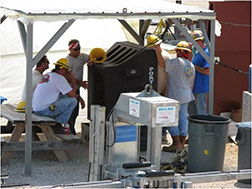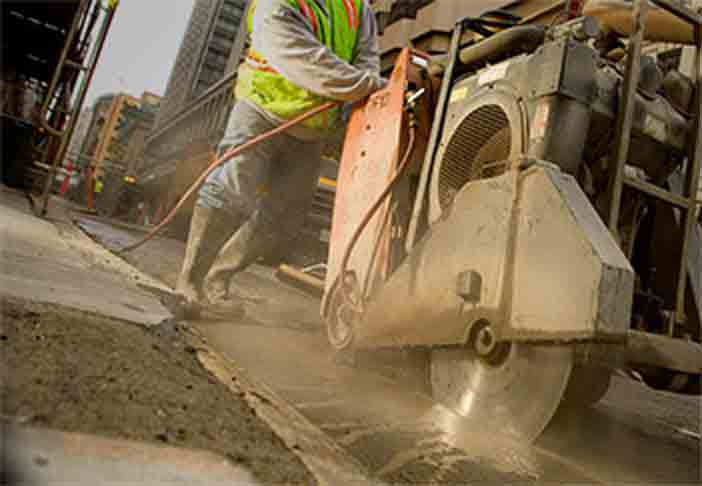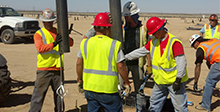Beat the Heat in Summer Construction
By the Laborers’ Health & Safety Fund of North America
Summer is coming and with it, energy-sapping heat. For construction laborers and others who work outdoors, or who, regardless of the time of year, work in heat-producing environments, heat is not only uncomfortable, but also dangerous.
Heat sickens thousands of workers every year and kills more than 30. About half of these deaths occur in the construction industry. Heat can make anyone sick, but people who are overweight, have high blood pressure or heart disease are at increased risk. So is anyone who takes allergy medication, decongestants or blood pressure medication.

“Precautions must be taken when it’s hot outside. Engineering controls, such as misting and ventilation, can make the jobsite cooler. Workers should take frequent work/rest cycles and stay hydrated with the intake of fluids,” says LIUNA General President Terry O’Sullivan. “Educating workers to recognize the symptoms of heat illness know steps to take to reduce their risk and what to do if a co-worker suffers from heat exposure is also essential.”
Heat stress can cause a host of conditions and illnesses ranging from rashes and cramps to heat exhaustion and life-threatening heat stroke. Factors that can make construction laborers particularly vulnerable to heat stress and illnesses related to heat stress include:
– Working in high temperatures and humidity, direct sun exposure and no breeze
– Engaging in heavy physical labor
– Wearing waterproof clothing
Symptoms of heat exhaustion:
– Headaches, dizziness, lightheadedness, fainting
– Moist skin
– Irritability or confusion
– Upset stomach, vomiting
Symptoms of heat stroke:
– Dry, hot skin with no sweating
– Confusion, loss of consciousness
– Seizures or convulsions
Employers can help protect workers from the heat by following these precautions:
– Allow workers to acclimatize by gradually increasing exposure to heat over a five-day period.
– Provide cool water to drink (five to seven ounces) every 15 minutes.
– Require rest breaks in a cool, shady spot and with fans available.
– Schedule heavy work during the coolest time of the day.
– When possible, assign work that can be done in the shade.
– Rotate workers when working in the heat is unavoidable.
– Suggest workers wear lightweight, light-color clothing.
– Schedule additional rest breaks for workers who wear protective clothing and check their temperature and heart rate.
If a worker has symptoms of heat stroke:
– Call 9-1-1
– Move him/her to shade
– Wipe skin with cool water
– Loosen clothing
– Fan with cardboard or other material
Working in extreme heat – temperatures 10 degrees or more above the average high for the region – is sometimes unavoidable but it doesn’t have to be intolerable. With planning, construction laborers can work safely when temperatures are high.
OSHA’s Heat Stress Campaign and California OSHA’s Heat Standard – California is the only state that requires employers to protect workers from heat stress – provide information that will help keep workers everywhere safe. Recently, Cal/OSHA has proposed changes to its heat illness prevention standard.
The Laborers’ Health & Safety Fund of North America can help you design a heat safety plan that is specific to your worksite. The Fund also has a number of health promotion materials that provide information about heat stress that can be ordered through its online Publications Catalogue.
For more information on any of these services, call 916-604-5576 x103.







